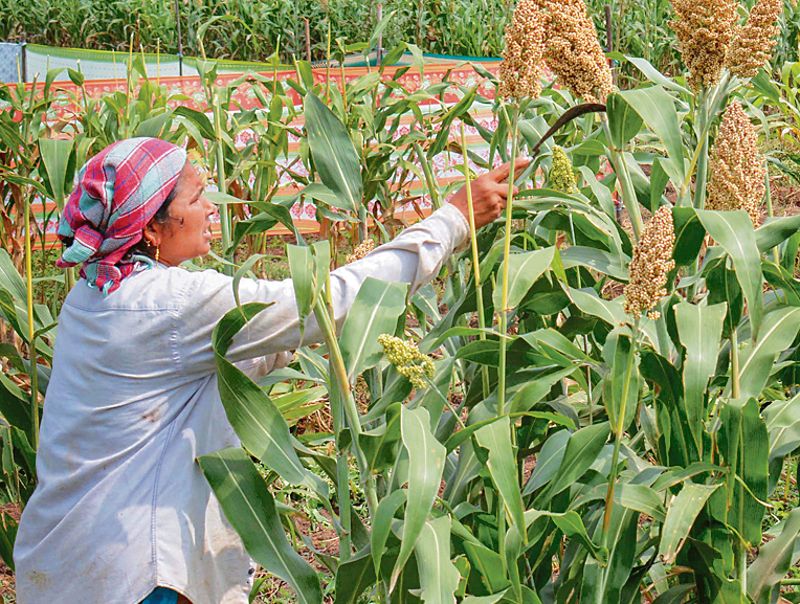Read full article By Abhilaksh Likhi@ The Tribune Photo Credit: PTI
The United Nations General Assembly has declared 2023 as the ‘International Year of Millets’. India has the largest biodiversity of millets as well as millet products in the world. Therefore, the announcement in the 2022-23 Union Budget of giving support to post-harvest value addition, enhancing domestic consumption and branding of millets, nationally and internationally, is a step in the right direction.
Millets include three major (sorghum, pearl, finger) and six minor crops (barnyard, proso, foxtail, kodo, brown top and little). They are three to five times more nutritious than wheat and rice in terms of proteins, minerals and vitamins. They need very little water for production — just around 25 per cent of the rainfall regime demanded by crops such as sugarcane and banana. More importantly, they can be grown in vast dry land areas using farmyard manures, thus reducing the dependence on synthetic fertilisers, too.
Hence, millet farming has a significant role in tackling the challenges of climate change, environmental degradation and malnutrition.
Among the states, the maximum areas under millets are in Rajasthan, Gujarat, Uttar Pradesh, Haryana (pearl or bajra) and Rajasthan, Maharashtra, Karnataka (sorghum or jowar). Ragi (finger) forms a major part of the food basket in certain regions of Karnataka, Tamil Nadu, Telangana and Uttarakhand. Minor millet area is the maximum in Madhya Pradesh, Tamil Nadu and Uttarakhand.
The countrywide cropped area stands at approximately 14 million hectares, with an annual production of approximately 16 million tonnes. India produces 80 per cent of Asia’s and 20

